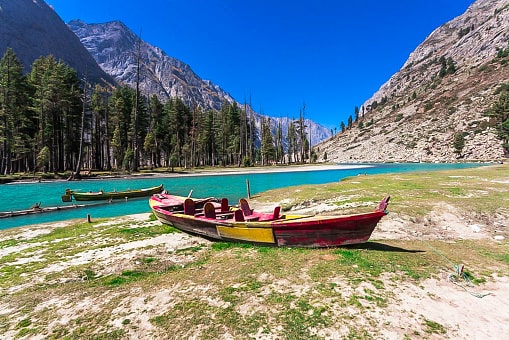Swat, often referred to as the “Switzerland of the East,” is a gem in Pakistan’s Khyber Pakhtunkhwa province. Known for its lush valleys, majestic mountains, and crystal-clear rivers, this region is a must-visit for nature enthusiasts. Before embarking on a journey to Swat, it’s essential to understand its weather conditions, which can greatly impact your experience.
Weather Overview of Swat Valley
Swat experiences a temperate climate, with distinct seasons that attract different types of travelers. The valley’s weather can vary dramatically depending on the time of year, so understanding the seasonal changes will help you plan your trip effectively.
Spring in Swat (March to May)
Spring is one of the most pleasant times to visit Swat. The valley comes alive with blooming flowers, and the weather is mild, with temperatures ranging from 10°C to 20°C. This season is ideal for those who enjoy outdoor activities such as hiking and sightseeing. The clear skies and gentle breezes make it perfect for exploring Swat’s natural beauty.
Summer in Swat (June to August)
Summer is the peak season for Swat tourism. The valley becomes a retreat for people escaping the intense heat of the plains. Temperatures in summer usually range between 15°C to 30°C. The mornings and evenings are cool, while midday can get warmer, especially in lower areas of the valley. This is the best time to explore the various Swat Tour Packages, offering activities such as camping, trekking, and visiting lakes like Malam Jabba and Mahodand.
Monsoon Season in Swat (July to September)
The monsoon season brings moderate rainfall to Swat, which enhances the valley’s lush greenery but can also cause some travel disruptions due to landslides and slippery roads. However, if you’re an adventurous traveler, visiting during this period can offer a unique and serene experience of Swat. The rains bring a refreshing atmosphere, making the mountains appear even more majestic.
Autumn in Swat (September to November)
Autumn is another beautiful season in Swat, marked by the changing colors of the foliage. The weather is generally cool and dry, with temperatures ranging between 10°C and 25°C. The crisp air and stunning landscapes make autumn an ideal time for photographers and nature lovers. During this season, you can find several Swat tour packages tailored for sightseeing and exploring cultural sites like the Mingora Bazaar and Buddhist ruins.
Winter in Swat (December to February)
Swat transforms into a winter wonderland from December to February, with snowfall in higher altitudes like Malam Jabba, making it a popular destination for winter sports enthusiasts. The temperatures can drop to as low as -5°C, especially at night, but the days are relatively mild, ranging from 5°C to 10°C. If you’re planning a winter trip, make sure to pack warm clothing and book a Swat tour package that includes snow activities like skiing or snowboarding.
Best Time to Visit Swat
The best time to visit Swat largely depends on the kind of experience you’re looking for. If you’re after vibrant landscapes and pleasant weather, spring and autumn are ideal. For those looking to escape the summer heat, June to August is perfect. Winter, on the other hand, is best for those who want to experience snowfall and enjoy winter sports.
How Weather Impacts Travel Plans in Swat
Weather plays a significant role in shaping your travel itinerary. During summer and spring, all major tourist destinations in Swat, such as the Fizagat Park, Mingora, and the picturesque valleys of Kalam, are easily accessible. However, winter and monsoon seasons can bring road blockages and limited accessibility to certain areas due to snow or landslides. Therefore, it’s recommended to keep an eye on weather forecasts and prepare accordingly for any challenges.
Packing Tips for Swat According to the Weather
- Spring/Autumn: Light layers, comfortable shoes for hiking, and a light jacket for cooler evenings.
- Summer: Light clothing, sunscreen, sunglasses, and comfortable footwear.
- Winter: Warm layers, insulated jackets, boots for snow, gloves, and hats.



